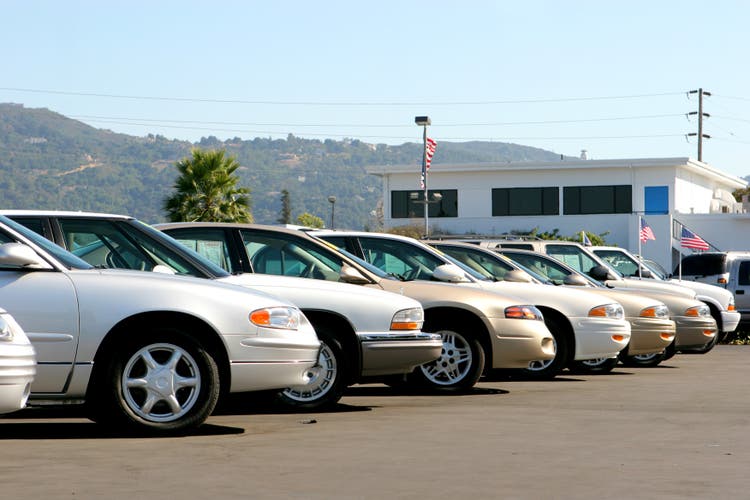Keith Lance
A merger between two auction operators in the US was announced two weeks ago. Online and physical heavy equipment auction operator Ritchie Bros Auctioneers (RBA) is buying salvaged vehicle-focused IAA (NYSE:IAA). IAA shareholders are set to receive cash consideration $10/share +0.5804 in RBA stock – currently a 9% spread. The transaction will require equity holder approvals on both sides and regulatory go-ahead. The merger closing is expected in H1’23. IAA’s shareholder approval might be the main hurdle here. Recently, reputable activist Ancora (4% stake in IAA) emerged with a letter to the company’s board, arguing that the transaction – albeit highly strategic – undervalues the target and pushing for a higher offer. Ancora noted it would vote against the deal if the merger terms stand.
The activist Ancora’s claims seem to be supported by relative valuation. The transaction values IAA at 11.4x TTM EBITDA – a wide discount to the main competitor CPRT which trades at 19.5x. Notably, CPRT has boasted a higher market share (38% versus 26%) as well as higher EBITDA margins (43% versus 25%), however, its revenue growth rate since 2018 has been nearly identical (other than one negative sales growth year for IAA) with 8-33% for IAA compared to 8-30% for CPRT. Other acquisitions in the sector – performed by CVNA, IAA and TDR Capital – have been made in the 13-22x EBITDA range.
The acquisition seems to be highly strategic for the buyer RBA, suggesting a higher bid might materialize. RBA has explored this transaction since 2019 and it would allow the company to expand into the adjacent salvage car and auto part business. Given highly complementary business models, RBA’s management expects $100m-$120m in cost synergies by 2025 coming from corporate overhead optimization (compared to ~$1bn in TTM combined EBITDA). Interestingly, the activist Ancora has noted these synergies could reach $200m annually. Notably, despite exposure to the vehicle market, IAA’s business is non-cyclical which is expected to diversify RBA’s revenue streams ahead of a potential cyclical downturn. Finally, RBA is in solid liquidity position – 0.5x net debt/EBITDA – meaning boosting cash consideration would not be an issue. These arguments suggest the buyer might potentially raise the bid if faced with significant opposition from IAA’s equity holder base.
Meanwhile, IAA equity holders’ support for an improved bid would seem likely given IAA management’s arguably questionable track-record since 2019 and strategic rationale. IAA’s leadership has carried out expensive/un-strategic acquisitions while continuing to lose US market share. Despite secular industry tailwinds driving strong recent operational performance as displayed by growing revenues ($1.8bn in 2021 and $2.1bn TTM compared to $1.4bn in 2019) and EBITDA ($547 in 2021 versus $412m in 2019), this year the stock price has fallen and now trades at the spin-off levels. In Mar’22, Ancora issued a letter to the company, pushing for CEO’s resignation or a company sale. Ancora noted that IAA’s market share decline has resulted from the company’s inability to service one of the largest insurance customer due to catastrophic events. To this end, the merger would expand IAA’s yard footprint in Texas and Florida where IAA previously did not have sufficient capacity to serve clients during catastrophic events.
Regulatory Risk
From regulatory perspective, any risks seem minimal. The companies have rather limited horizontal overlap in product offerings as IAA sells an insignificant amount of heavy equipment salvage. While IAA does have a sizeable market share in the US online automotive auction market – estimated at 26% – it is only the third largest player after peers CPRT (38%) and KAR (32%). Meanwhile, RBA’s TAM – the heavy used equipment industry which is highly fragmented – is estimated at $300bn globally, dwarfing RBA’s 2021 gross transaction volume of $5.5bn. Both companies’ operations are centered around North America, with 85% of RBA’s revenues coming from NA and 88% of IAA’s sales generated in the US, implying international regulatory approvals might not be an issue. These arguments, coupled with confidence from both management teams, suggest any hurdles on the regulatory front is unlikely.
Conclusion
With the current spread of 9%, IAA-RBA seems to be an attractive merger arbitrage play. Given reputable activist’s involvement and strong strategic rationale, $RBA might eventually issue a higher offer, suggesting potential for upside above the current spread.
Black Friday Special – Limited time FREE TRIAL
For the next few days only I am opening my premium service for FREE TRIALs – new subscribers can explore SSI at no cost for two whole weeks. The offer expires on the 30th of November. That’s a Black Friday special only, so grab this opportunity while it lasts.
SIGN UP NOW and receive instant access to my highest conviction investment ideas + premium weekly newsletter.


Be the first to comment